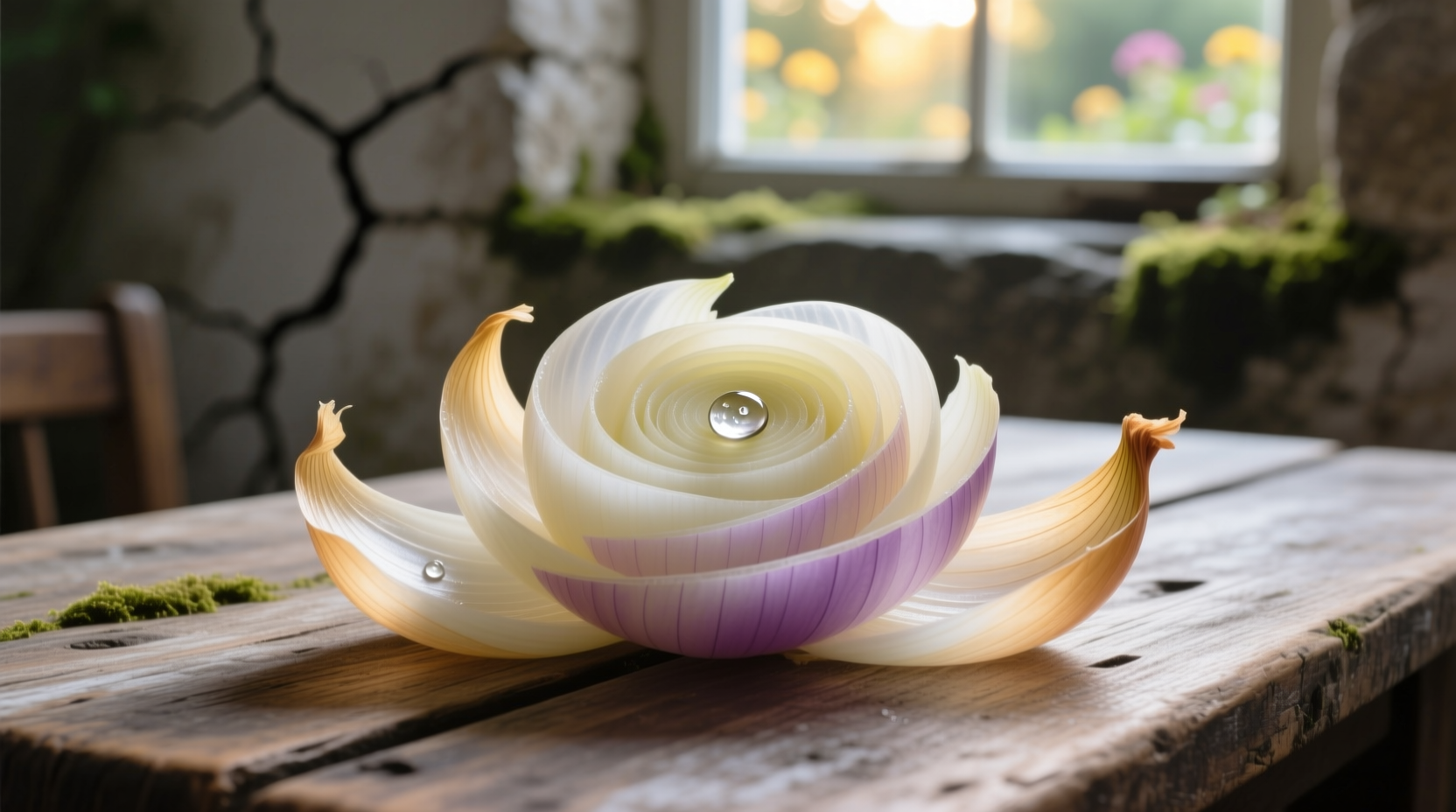Professional chefs and home cooks alike are discovering the hidden potential in what was once considered kitchen waste. Those papery outer layers of onions you've been discarding actually contain concentrated flavor compounds and beneficial phytonutrients that can elevate your cooking while supporting sustainable practices. Let's explore how to harness this overlooked resource.
The Flavor Science Behind Onion Skins
Contrary to popular belief, onion skins aren't just protective layers—they're flavor powerhouses. Research from the USDA Agricultural Research Service confirms that onion skins contain up to 20 times more quercetin than the edible flesh. This flavonoid not only provides antioxidant benefits but also contributes to the rich golden color and complex flavor profile when simmered in liquids.
| Component | Onion Skins | Onion Flesh |
|---|---|---|
| Quercetin Content | 20-30 mg per 100g | 1-2 mg per 100g |
| Color Contribution | Rich golden hue | Minimal color |
| Flavor Concentration | Intense savory notes | Mild sweetness |
Transforming Waste into Culinary Gold
Before you reach for the compost bin, consider these practical applications that professional kitchens have utilized for generations:
Building Flavor Foundations
Save your onion skins in a freezer bag until you have enough for stock preparation. When making vegetable or meat stocks, add approximately one handful of skins per gallon of liquid. Simmer for 30-45 minutes—any longer and you risk bitterness. The result? A beautifully colored broth with enhanced depth that forms an excellent base for soups, stews, and sauces.
Natural Fabric Dyeing
Yellow and red onion skins produce stunning natural dyes ranging from soft gold to deep rust. According to textile preservation studies from the Smithsonian Institution, the anthocyanins in red onion skins create particularly colorfast results. Simply simmer skins in water for 45 minutes, strain, then immerse pre-mordanted fabric for 30-60 minutes. This traditional technique works beautifully on natural fibers like cotton, linen, and wool.

Composting Accelerator
While not suitable for direct composting due to slow decomposition, dried onion skins can be added to your compost pile in moderation. The USDA National Agricultural Library notes that their high carbon content helps balance nitrogen-rich kitchen scraps. Just be sure to dry them thoroughly first to prevent mold.
Practical Implementation Guide
Follow this simple system to incorporate onion skins into your kitchen routine:
- Collection: Keep a dedicated freezer container for skins—no washing required
- Storage: Freeze for up to 6 months (prevents spoilage while preserving compounds)
- Preparation: Add directly to simmering liquids without washing
- Usage Ratio: 1 handful per gallon of liquid for stocks, 2 cups per gallon for dyeing
- Timing: 30-45 minutes for stocks, 45-60 minutes for dyes
Important Considerations and Limitations
While onion skins offer numerous benefits, certain limitations exist:
- Not for direct consumption: Skins are too fibrous to eat directly—always strain after simmering
- Quality matters: Only use skins from organic onions to avoid pesticide concentration
- Color variation: Red onion skins produce richer colors than yellow varieties
- Flavor balance: Excessive use can create bitterness—start with small amounts
Avoiding Common Mistakes
Many home cooks make these errors when first experimenting with onion skins:
- Using skins from non-organic onions (concentrates pesticides)
- Simmering too long (creates bitter flavors)
- Adding to finished dishes rather than foundational liquids
- Expecting immediate color (requires proper simmering time)
- Storing at room temperature (leads to mold growth)
Maximizing Your Onion's Potential
By incorporating onion skins into your cooking routine, you're not just reducing waste—you're enhancing flavor complexity while accessing additional phytonutrients. This simple practice aligns with professional kitchen standards where nothing goes to waste. Start small with stock preparation, then experiment with natural dyeing as you become comfortable with the process. Remember that sustainable cooking isn't about perfection—it's about progress, one onion skin at a time.
Can onion skins be eaten directly?
No, onion skins are too fibrous for direct consumption. They should be used to infuse flavor into liquids like stocks or dyes, then strained out before serving. The valuable compounds transfer to the liquid while the indigestible fiber remains in the skins.
How long can I store onion skins before using them?
Frozen onion skins maintain their flavor compounds and color properties for up to 6 months when stored in an airtight container. Room temperature storage is not recommended as it can lead to mold growth within days.
Do different onion varieties produce different results?
Yes, red onion skins yield richer, rust-colored dyes and slightly sweeter flavor notes, while yellow onion skins produce golden hues with more pronounced savory characteristics. White onion skins offer the mildest flavor and palest color, making them less desirable for these applications.
Are there any safety concerns with using onion skins?
The primary safety consideration is using only organic onion skins to avoid concentrating pesticides. Additionally, never use moldy or spoiled skins. When used properly for infusion and then strained, onion skins present no safety risks and may provide additional antioxidant benefits.











 浙公网安备
33010002000092号
浙公网安备
33010002000092号 浙B2-20120091-4
浙B2-20120091-4